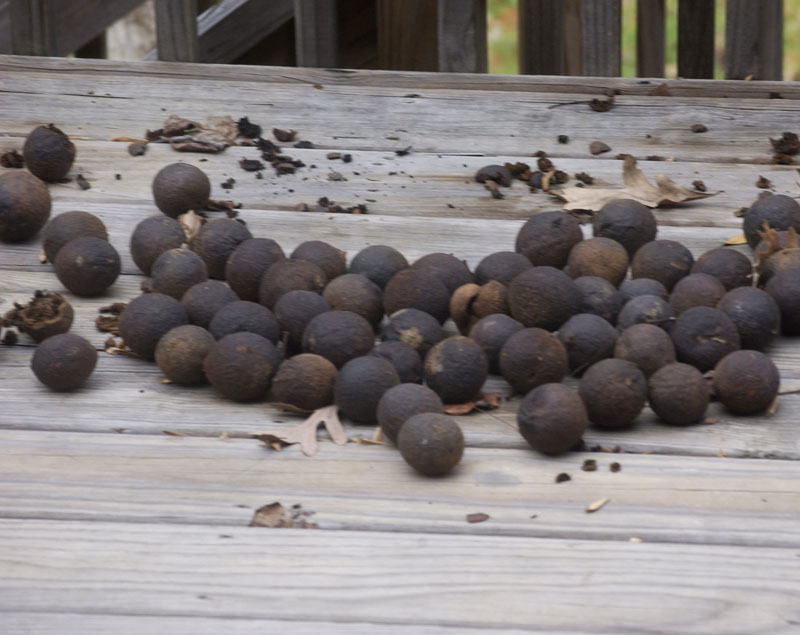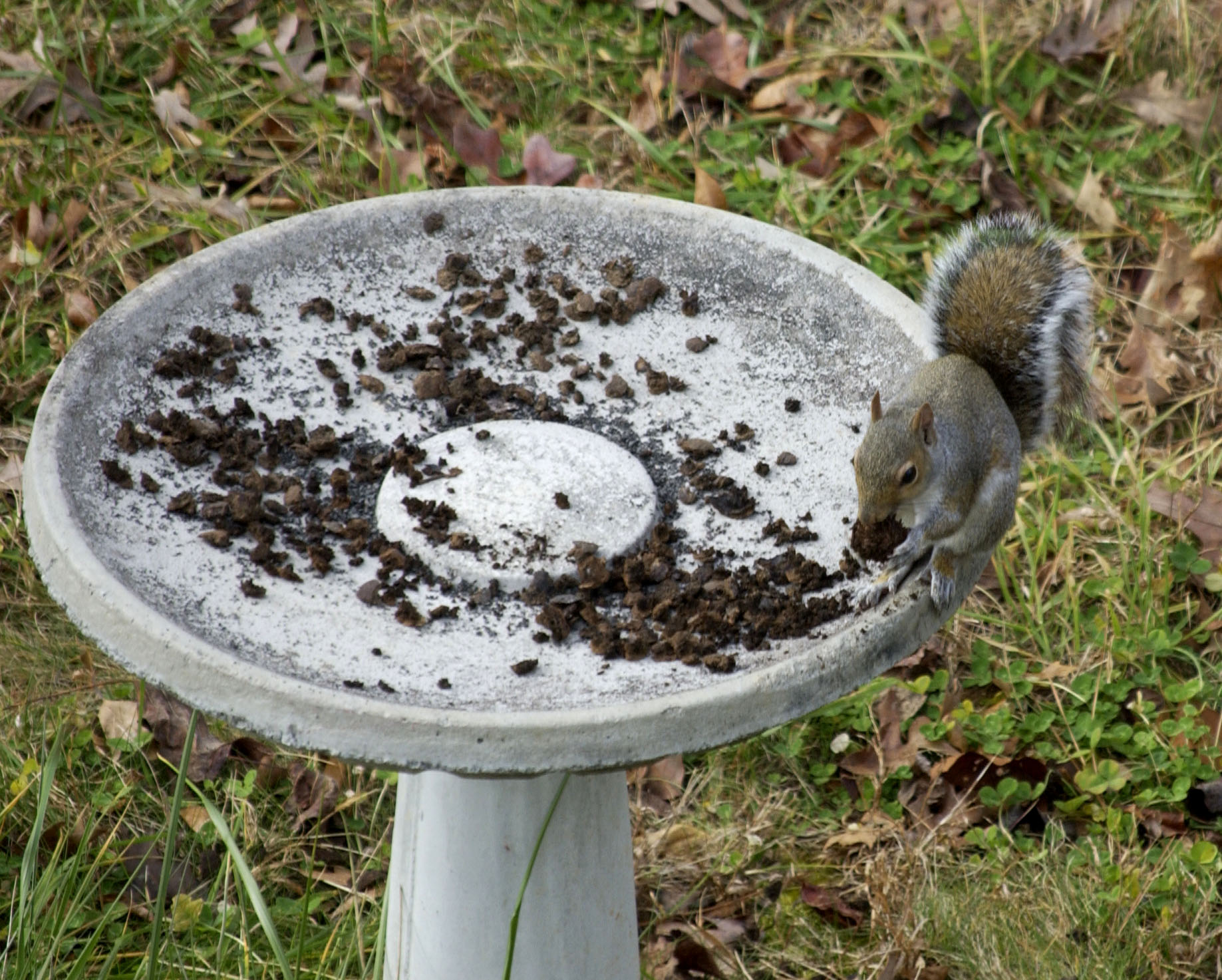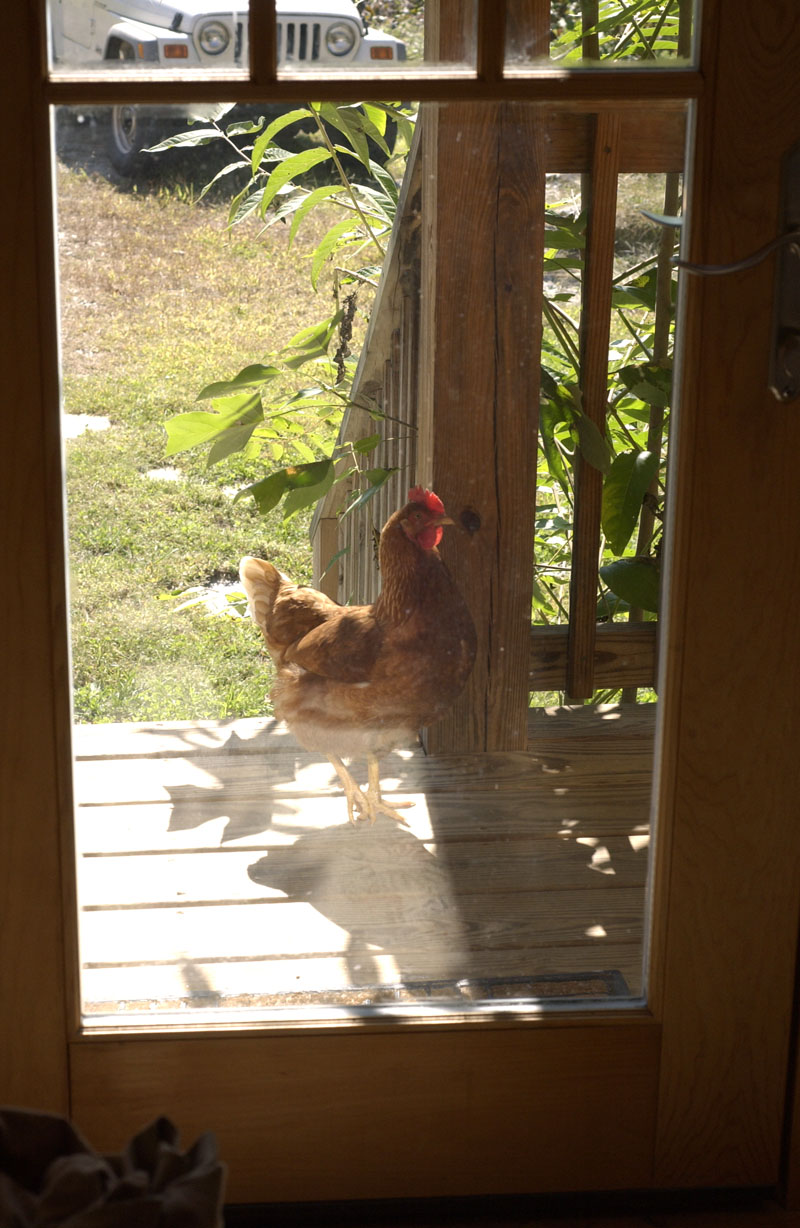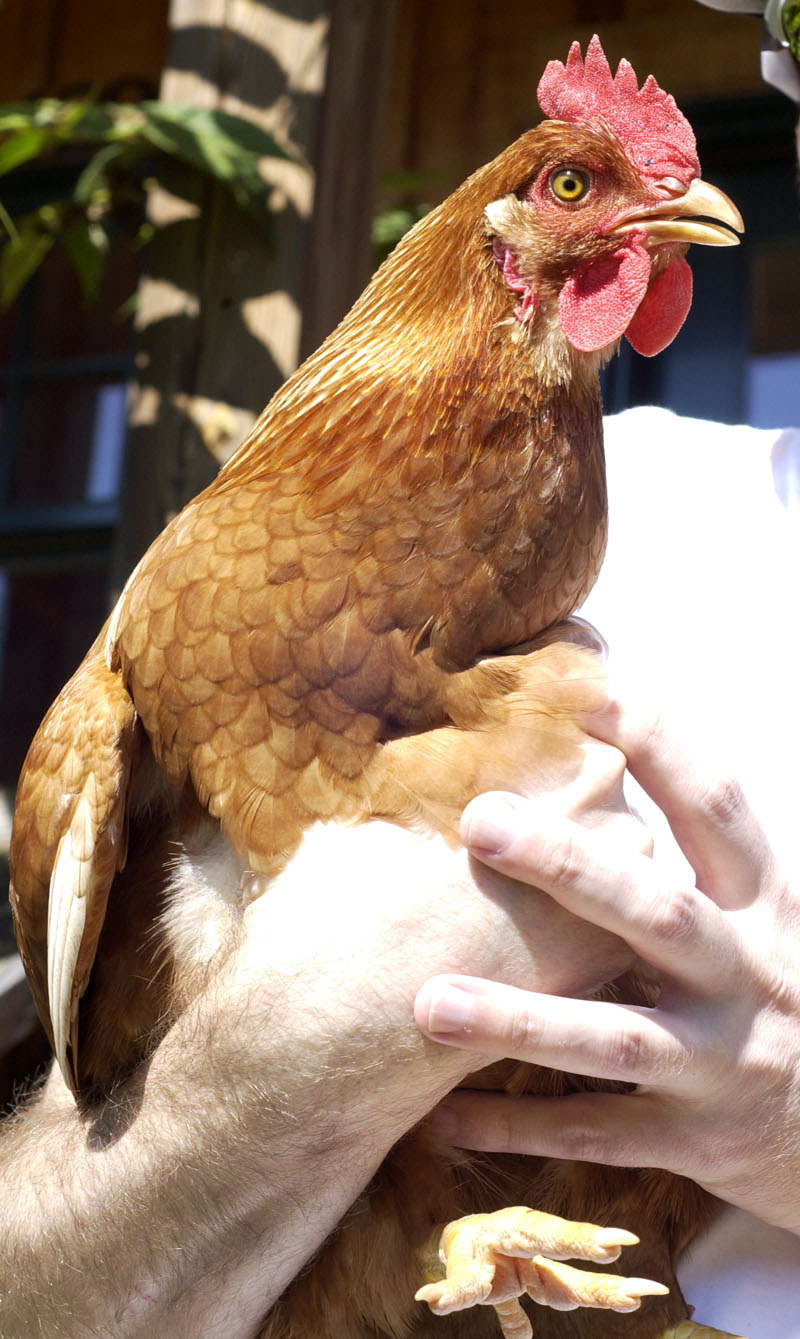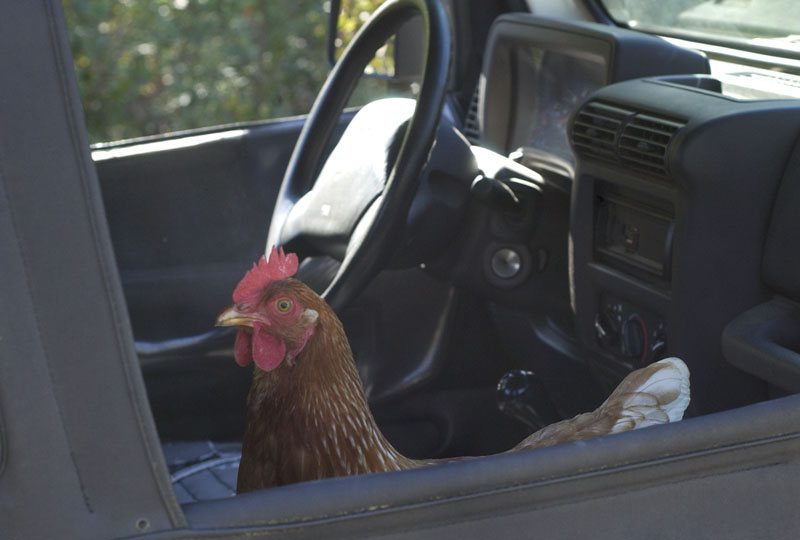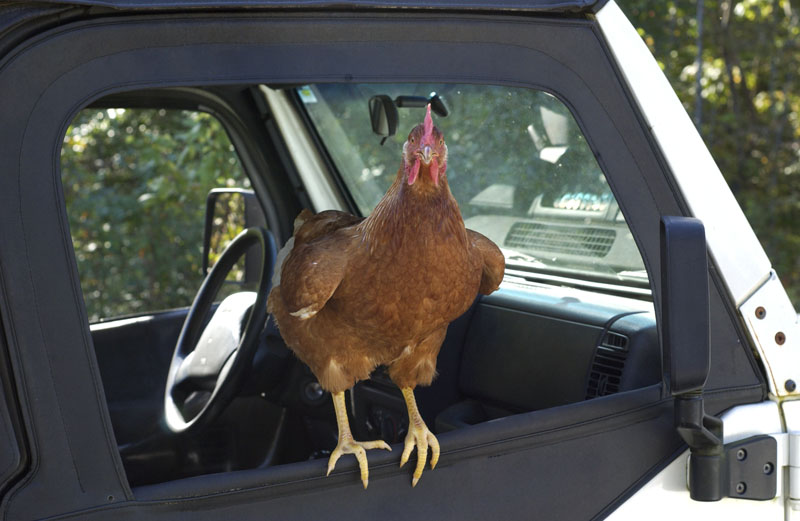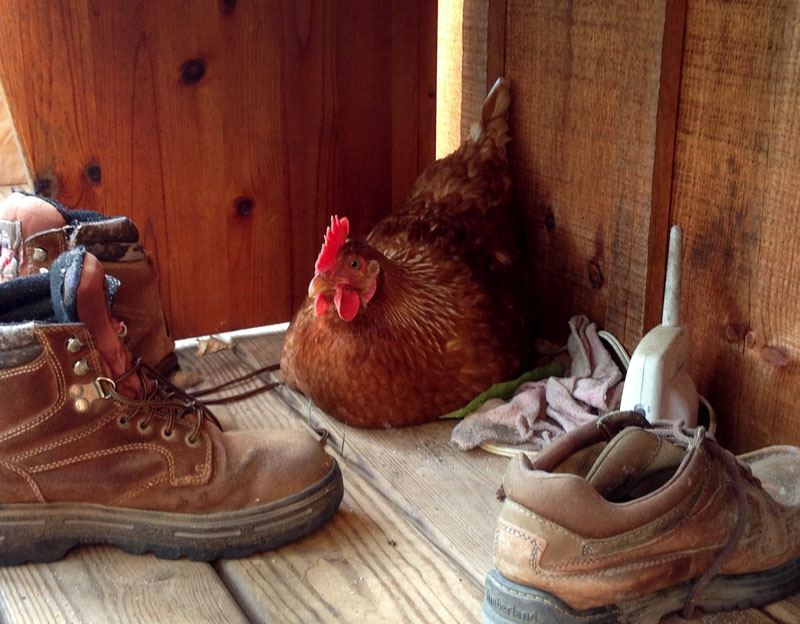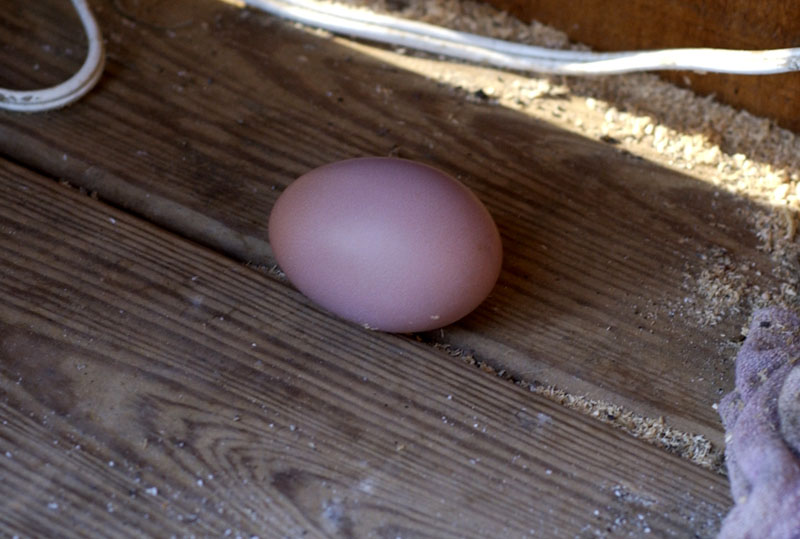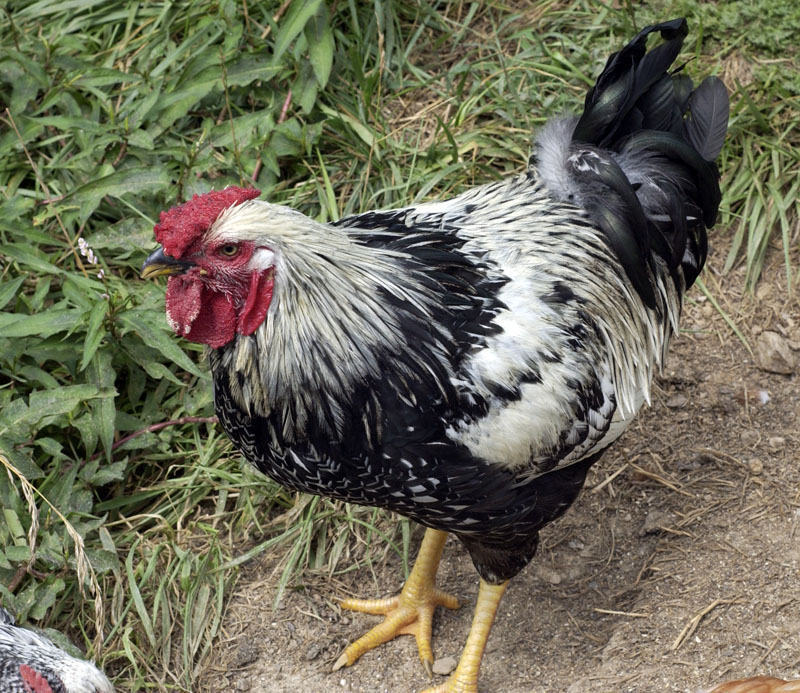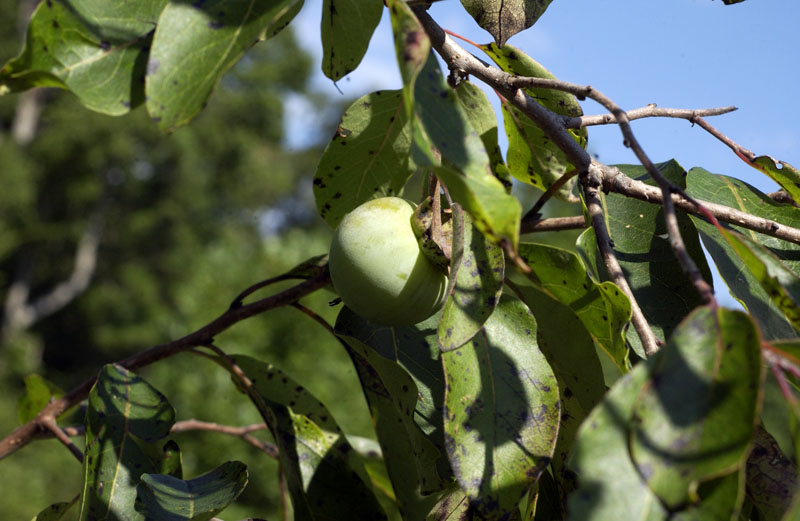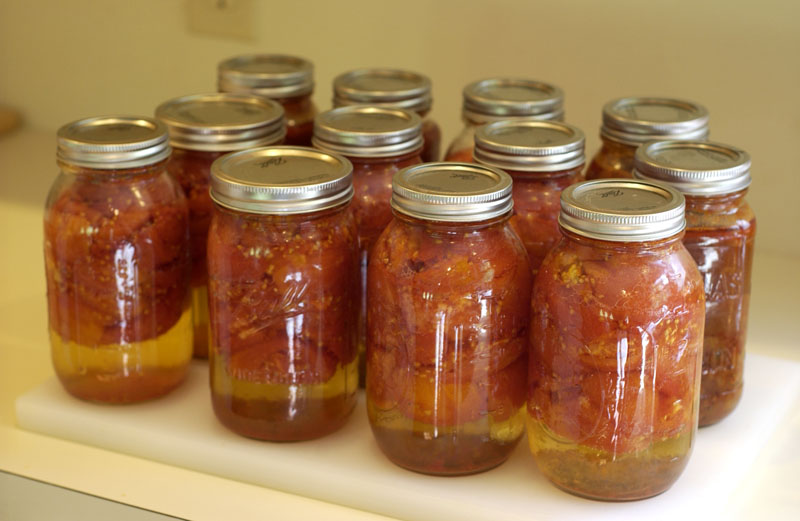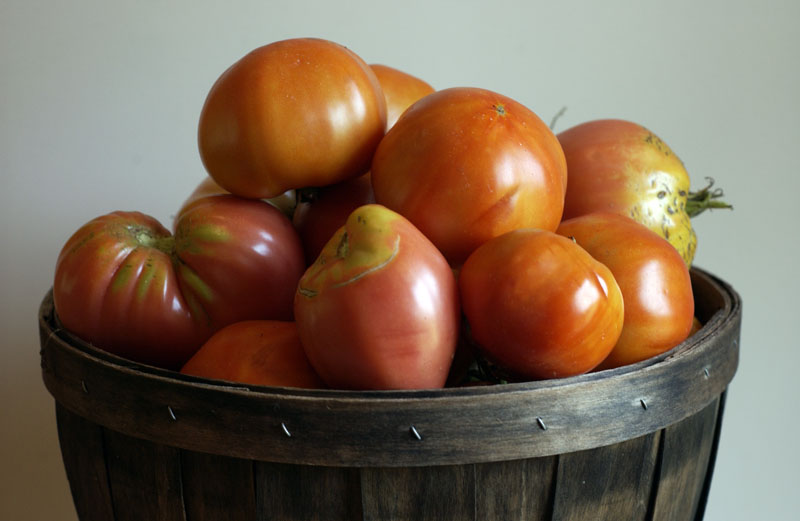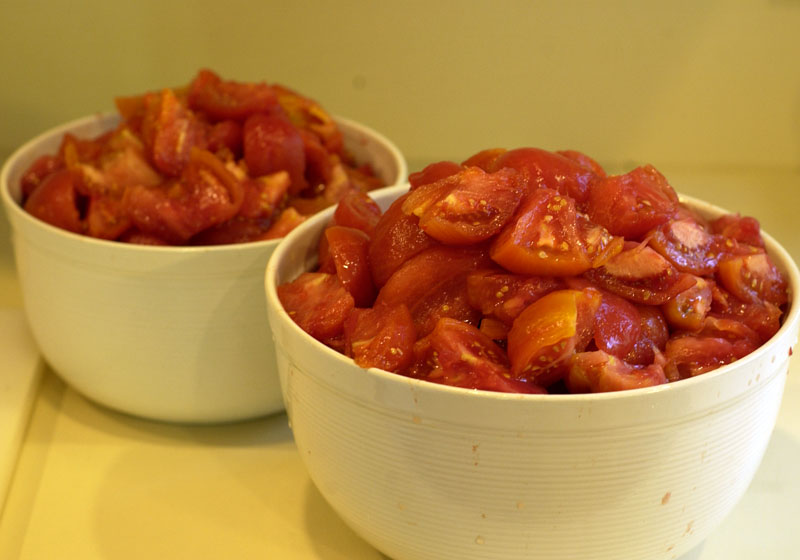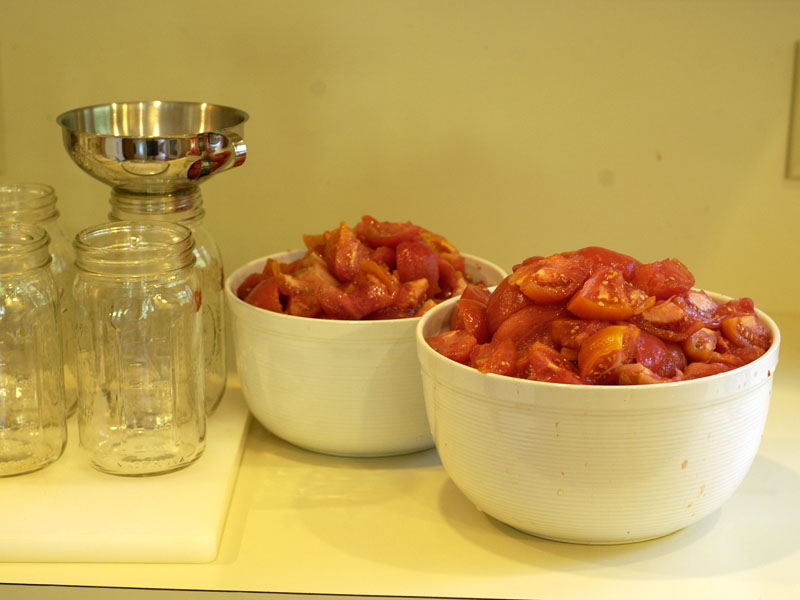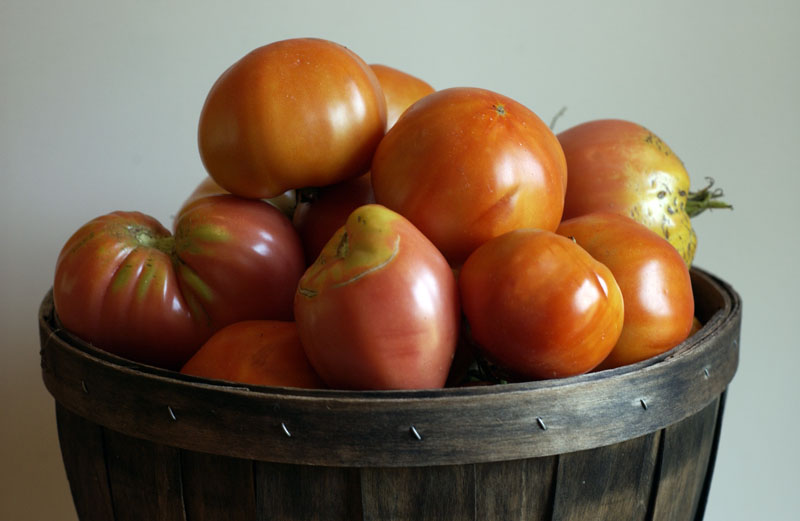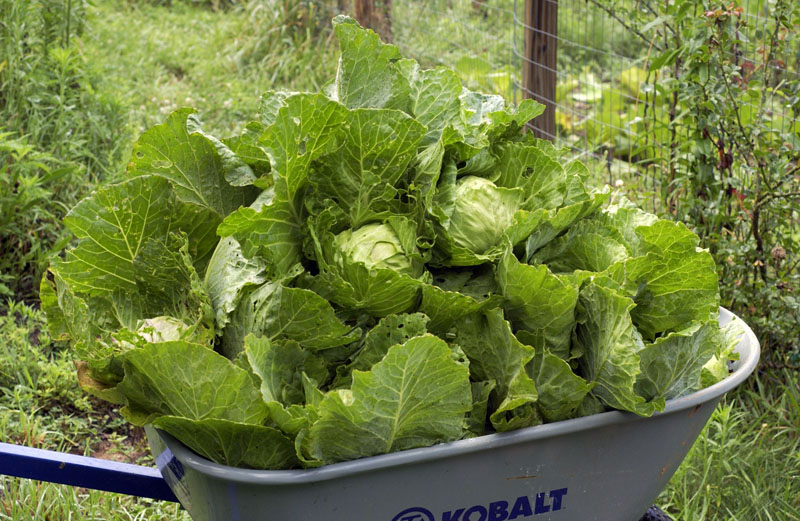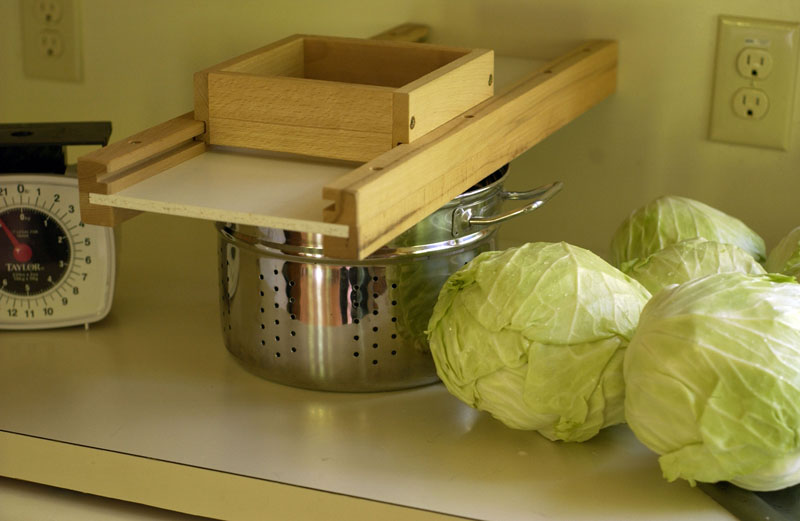Squirrels are bold, sneaky little things. They come up to the windows to snoop and tease the cat. One by one, this squirrel is stealing my black walnuts, which are drying on the deck. He nibbles off the hull either on the railing or the bird bath, then scampers back into the woods carrying his prize.
Category: The land
That Fiona …
I wish everyone could get to know just one nice chicken really well. Then we’d stop thinking that chickens are dumb and unfeeling, and we’d give chickens much better lives. All chickens are different. Even when they’re brought up similarly, they have very distinct personalities. The more attention they get, and the more you interact and talk with them, the more they develop, and the sweeter their attitude toward human beings.
In the new generation of hens at Acorn Abbey, Fiona loves human attention the most. Now, one of the first things I explain to all the abbey chickens, as soon as they’re old enough to understand, is the deal we have: They get a nice home, free food and water, a place to roam and scratch, a decent house, a fence to protect them from predators, and a place to retire when they’re old. I get the eggs. None have complained about the deal, other than Patience who got it in her head a couple of summers ago that she was going to keep her eggs and sit on them. I disputed that, and I won. But I don’t think she understood that at that time she had never met a rooster and that she was wasting her time.
Anyway, Fiona quickly figured out where I live and what door I usually emerge from. The first time she stood at the front door and called (at the top of her lungs), I thought she was merely asking for attention. But a few days later, after some repetition of this behavior, I found three eggs under the bench beside the front door. Then I had to reconsider her behavior. I think she was letting me know that she’d left me an egg.
Now, why would Fiona choose not to lay in the chicken house like the other hens? No matter how much new wire I put up to block their escape routes, she and Helen still get over the fence any time they like. Given that Fiona could lay anywhere she chooses inside or outside the fence, why would she come here to lay, and why would she stand at the door, look through the glass, and call at the top of her lungs after laying? I think she’s bringing me a gift, and she wants me to know.
She loves to be picked up, petted, scolded mildly, and put back inside the fence. In our evening chats, when I sit a spell in the orchard with the chickens before they go in for the night, Fiona climbs into my lap. The other hens get jealous.
Spoiled? Nah. It’s the way all chickens ought to live.
Fiona
Unmanageable chickens
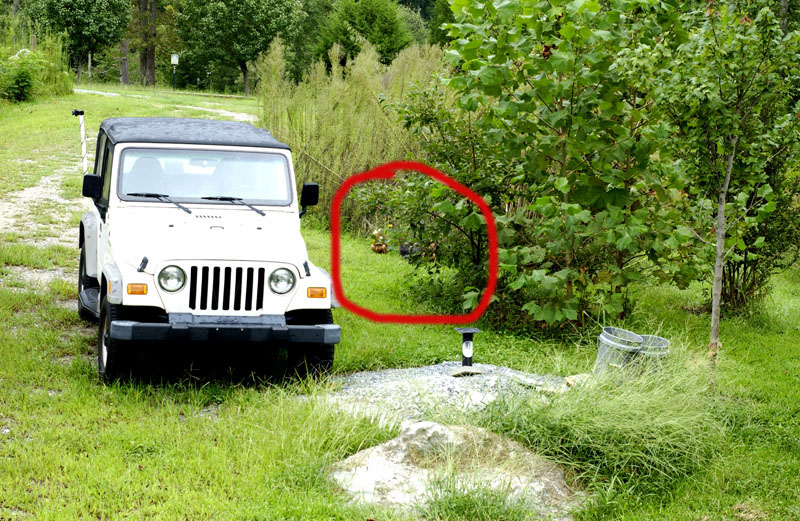
There are three escaped chickens in the circle — Josephine, Fanny and Fiona.
First it was only Josephine who was escaping from the chicken fence. Then she taught Fanny, Fiona, and Helen how to do it. Evangeline, the rooster, has never escaped, nor has Patience. The rooster is just too dumb, I think. And Patience is from an older, more proper generation of chickens for whom such behavior is unthinkable. Patience had a solid, old-fashioned upbringing.
I still am not certain how they’re doing it. And I soon discovered that, not only can they get out, they also can get back in. This goes on many times a day now. I’ve stopped rushing out to scoop up escaped chickens. What good does it do? I thought it better to try to keep an eye on them to try to catch one of them in flagrante delicto and discover their secret passage.
One of the things I’ve dreaded is that a chicken would find herself trapped outside the fence at dusk. Tonight that happened. Josephine was running back and forth along the bottom of the fence on the woods side, frantic to get back inside, calling out in fear and frustration, after everyone else had gone into the chicken house to go to bed. On the woods side, the fence is up against a thick thicket of briars, blackberry, and poison oak. There’s just no way I’d go in there to retrieve her. I tried to entice her toward the gate, but every time we got near the corner of the fence she’d turn and run back into the thicket. I thought that if I watched her long enough, she’d eventually find her way inside and reveal her secret as well.
After throwing herself repeatedly against the fence in a state of panic, finally she started to climb, with those strong chicken feet. Up she went, as though climbing a ladder, all the way up six feet of welded wire fence. Then she perched on top, holding tight as the fencing wagged in and out. After she got her balance, she flew down into the orchard. Then she strode, clucking and grumbling, up to the chicken house and flew inside.
Now what in the world am I going to do with a bunch of fence-climbing chickens?
Seriously, this is Ken’s doing. He trained them to be curious and bold, and sassy but sweet, to question authority, to push their boundaries. And while Ken is off somewhere pushing his own boundaries, here I am trying to round up rebellious, fence-climbing chickens and get them safely to bed.
Ken, maybe chickens that like to climb fences would enjoy a long hike? I could overnight them by Fedex…
Rowdy chickens

Can you espy the chicken in this photo?
The new generation of chickens seem to be rowdier and more inquisitive than the previous generation. Sister Josephine, who I thought was rather mousy when she was young, has taken to escaping, daily, from inside the fence. I still have not caught her in the act to see how she does it, but I suspect she’s flying up onto the horizontal members of the fence structure, then hopping up onto the wire, then flying down to the other side.
She strolls some in the yard, but mostly she peeks in the windows, and waits by the door for me to come out with treats. And she seems to enjoy being caught and lectured. I blame this on Ken. He raised them to be willful and rebellious.
Brother Evangeline
From early on, we had our suspicions about Sister Evangeline. She had large feet, and she grew unusually fast. Still, she was gentle enough, though she didn’t like to be petted like the other hens. And she did not have the flashy comb that roosters (or so I thought) are supposed to have.
The first convincing sign came about three weeks ago, when there was a strange noise from inside the fence that scared the cat and me both. It sounded vaguely like a fox barking. But when I dashed to the door and looked, I saw an adolescent rooster practicing his crowing.
The second convincing sign started about two weeks ago. Watching chickens do it is not a pretty sight. It looks like rape to me, and now it happens first thing every morning, as soon as I let the chickens out, and again at random times during the day. He pinches the hens on the back, or on the back of the neck, to hold them still while he does his ugly little thing. The hens squawk. But so far no one seems to have been hurt.
I’ve been opposed to having a rooster, for several reasons. For one, they don’t lay eggs. For two, they make a lot of noise. For three, they can be mean. I have very clear memories of a rooster who used to flog me when I was a child and was sent to the barn to feed the chickens. I came home from school one day, and he was in the oven.
However, Brother Evangeline doesn’t spend a lot of time crowing. And, so far, he has never been aggressive with me. He continues to spat with Patience, the oldest and largest hen, but she hasn’t backed down yet and given up her place at the top of the pecking order, and they have not hurt each other.
So I guess the abbey’s nunnery is stuck with a rooster.
Persimmons, volunteering
I have carefully protected the four native persimmon trees that volunteered around the edges of the yard. They’re about eight feet tall now. This year, two of them are bearing. There are lots of wild persimmons along the edges of local woods, but they’re usually so surrounded by undergrowth and tangle that it’s hard to retrieve the fruit. I can mow around these four trees. They’ll be easy to get at.
Something else to fight the raccoons for.
A sacred summer ritual
For many years, I’ve wanted to get myself into a situation in which I could can tomatoes. If your situation permits the growing and canning of tomatoes, you’re all set. It’s a yardstick against which you can measure your lifestyle.
But it took so long! Even after I bought the land, it was seven more years. The steps, roughly, are:
If you fumble a step, you lose a year. For example, last year I did not have irrigation. Hot, dry weather torched the garden. This year, the irrigation system made a huge difference. And in the early years of the Acorn Abbey project, my hands were too full to get around to things like preparing the garden soil or building the garden fence.
Why do we work so hard for tomatoes? I think it’s not just because they’re so good eat. I think it’s because tomatoes are sacred.
Tomatoes = hard work
Sauerkraut day
Of all the old-fashioned farm and kitchen chores I do, making sauerkraut is probably my least favorite.
Yesterday I pulled all the cabbages. There was a wheelbarrow load. Six hours later I had two full crocks — about 30 pounds — of sauerkraut starting to ferment, plus a few heads of cabbage to eat fresh. It’s hard, messy work. I washed each cabbage up in the garden area, with the hose. And then after bringing them down to the house, I washed each one again in the kitchen sink. The cleaning and washing alone is work enough, but shredding cabbage is even more miserable. It takes forever to shred that much cabbage, and it gets all over the kitchen. In any case, it’s a nice feeling of accomplishment when the work is done.
Early in the season, the cabbage was damaged pretty badly by cabbage worms. It took me too long to wise up and spray Bt, but that killed the worms, and the cabbages recovered far better than I ever would have expected. I saw only one cabbage worm while cleaning the cabbage. Next year I’ll know better. I’ll spray early and pre-empt the worms with Bt spray. The same is true of peaches, by the way. Peaches are highly susceptible to some kind of insect that lays eggs that hatch into larvae that tunnel into the peach. Next year, I’ll try to stay ahead of the enemies of the peach tree, probably with neem oil or a pyrethrin spray. By the time you first see them, they’ve already done a lot of damage.


